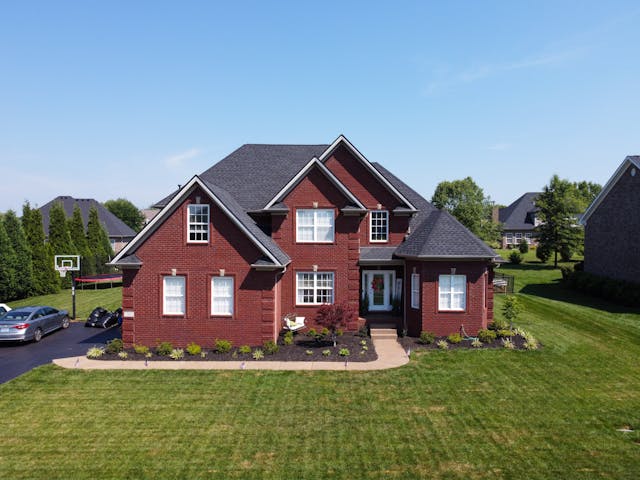This is a sponsored guest post.
Top 5 Things to Know Before Building Your Dream Home
Hey, guys! If you’re an Australian who wants to build a house, whether it’s a beach shack on the Sunshine Coast or a cozy cabin in the Victorian hills, you’re in for a wild ride! When you build a house from scratch, you go on a wild ride of excitement and mystery that ends with the very satisfying moment when the big front door opens. But let’s be honest: things aren’t always good. The rising costs, rules that could make things difficult for everyone, and uncertain weather are some of the things that could really mess up your plans if you are not ready. We’re going to talk about the five most important things you need to know before you start digging. From real-life experiences of other Australians who have been there, you can get useful insights and tips that you can use however you like. So grab a cup of coffee and settle in.
1. Set Your Budget Early On and Don’t Change It
Sit down and talk about money before you draw up your floor plan. It’s not cheap to build a house in Australia. The prices of land in Sydney and Melbourne can make your eyes itch, and building costs have been going through the roof because of problems in the supply chain.
First, do the math: add up the build, the stamp tax, the council fees, and any “other costs” like solar panels or landscaping. If you want to get a building loan in the local market, it’s a good idea to hire a financial advisor who knows about real estate. This person can help you get the loan through one of the “big four” banks or another regional lender.
Remember to add a cushion: at least 10 to 15 per cent extra should be set aside in case something unexpected comes up, like finding rocky soil that needs more digging. Friends of mine in Perth have told me about how they went over budget on site prep work that they didn’t plan for, which turned what should have been a two-month job into a money madhouse. To keep track of everything, you might want to use planning apps or spreadsheets for every penny, from the cost of the architects to the last bottle of paint. That way, you won’t have to cut costs in the middle of the building process, and you’ll be able to enjoy your dream home without losing your mind or your savings.
2. Pick the Best Spot With the Future in Mind
People often say, “location, location, location.” This is especially true in Australia, where huge lands offer everything from the cool vibes of cities to the peace and quiet of the bush. In addition to the sites themselves, you should also think about the following:
- Easy access to schools, public transportation, and other services that fit your needs.
- Also, if you live in a very busy city like Brisbane, you might want to look into places that are prone to flooding. Didn’t any floods happen in 2022? So, to protect your house of cards, look at past data and council zoning maps and see how far the water has come before.
Going to possible places at different times of the day and during different times of the year is a good idea. In Adelaide, that sunny block might look great in the summer, but in the winter, strong winds could make your garden unsafe. Also, think about the growth potential. Areas that are planned to get new infrastructure, like new train lines in the suburbs of Melbourne, may gain value over time.
Here’s a tip from experienced builders: hire a town planner early on in the process. They know how to get around Australia’s strict environmental rules and make sure your build meets bushfire standards and heritage overlays. When you make smart decisions, you’re not just building a house; you’re also investing in a neighborhood that will make your life better.
3. Plan Time for Australia’s Unique Climate and Way of Life
People in your sunny country have to deal with hot summers, cold winters, and everything in between. Because of this, your home design should be able to handle these changes. It’s better to choose energy-efficient choices that take passive solar into account. For example, windows facing north can capture natural light and heat, which should help lower power bills in Tasmania, where heating costs are known to be quite high. Also, choose materials that will last. If you live near the coast, choose materials that can stand up to UV rays and salt air.
For outdoor planning to work, there should be a smooth flow from inside to outside, which is a big part of Australian life. For example, outdoor composite decking is a great way to make your living area look better with little to no upkeep. It’s also great for BBQs and just chilling out in the afternoon. It doesn’t get damaged by the weather and is environmentally friendly, which fits with the growing interest in green building in the country.
Advice from people with green thumbs:
To get around water limits, people in states like South Australia that tend to have dry weather should put in rainwater tanks and native gardens. Get help from an architect who knows the local building rules, like the Nationwide House Energy Rating Scheme (NatHERS). This will help your home stay cool in the summer and warm in the winter. Being so open to new ideas will not only keep your house warm, but it will also be a smart investment when it comes to climate change.
4. Put Together the Best Team Possible for Your Projects
You wouldn’t go into the footy grand final without a strong team, right? When building your house, the same rule applies: surround yourself with the best and most trusted professionals from the start.
Finding a Trustworthy Builder
Then you look for a trustworthy builder. In Australia, you can check their records with the Master Builders Association or the state licensing bodies to avoid getting ripped off by shady contractors. Look for people who have worked before in your area, like someone who knows more about storms in Darwin than in Hobart.
The Rest of the Team
Think of architects and designers as creative partners. One creates your idea, and the other helps make it real by getting the right permits and approvals. Also, don’t skimp on your engineers. This is especially important when it comes to building safety in places like Western Australia that are prone to earthquakes. Another good idea is to get references and look at past work. Talking to past clients can teach you a lot about how to communicate and solve problems.
Furnishing Your Home
The last step in finishing a job is to arrange high-quality fixtures that look good and work well. Furniture packages Melbourne might be the easiest way for people in big cities to fill their new home with pieces that go together and show modern Aussie style. Putting together a good team will help you stay on track and make sure that every part of your dream comes true.
5. The Plan’s Long-Term Living and Resale Value
Not just these days’ changes, but also those that will happen tomorrow. Think about how the house can change as your life does. For example, as your kids get older and maybe start working from home, or as you get older and need more space, the house can grow with you.
In Australia, universal design features like wider doors and step-free entrances are becoming more and more popular. These features have the same goals as grants for making changes that are easier for people with disabilities to use. A lot of buyers are tech-savvy, so smart home systems for lighting and protection may make things easier along the way and appeal to those buyers.
A big part of sustainability is resale value. Features like double-glazed windows or EV charging points lower carbon emissions and attract Aussies who care about the environment. Avoid materials that need a lot of care; choose materials that don’t need much upkeep so that your upkeep costs are low. When you have less time for work, you can go for walks on the weekends.
People who work in real estate will tell you to look at market trends: what is selling well near you? For the Sydney market, this means that people want open-plan and home office plans right now. If you plan ahead, you can turn your dream home into a smart investment that can adapt to changes in your life, possibly making you happy instead of sad.
It’s a great adventure to build your dream home. But if you do these five things, make a smart budget, choose the right site, design for our climate, work with a professional, and plan for the long term, you will definitely be successful. The whole point is to turn possible bumps in the road into moments to celebrate as you make your own little corner of this beautiful country we love to call home.

Hi there! I am Emily Evert, the owner of Emily Reviews. I am 28 and live in a small town in Michigan with my boyfriend Ryan and our two pugs. I have a large family and I adore my nieces and nephews. I love reading memoirs, and learning about child development and psychology. I love watching The Game of Thrones, Teen Mom, Sister Wives and Veep. I like listening to Jason Isbell, John Prine, and other alt-country or Americana music. I created Emily Reviews as a creative outlet to share my life and the products that I love with others.
This post currently has no responses.















Leave a Reply